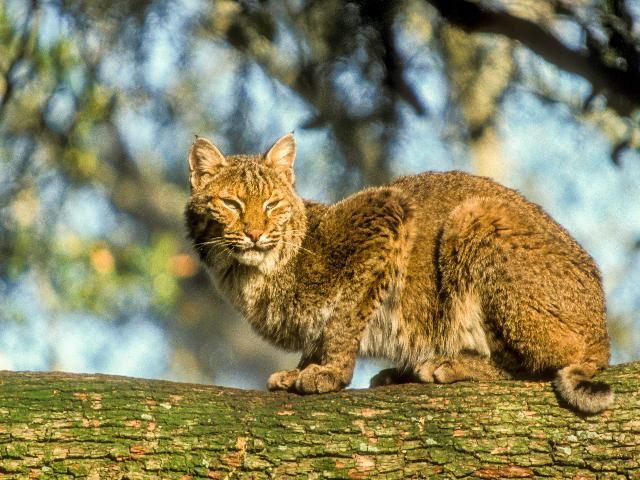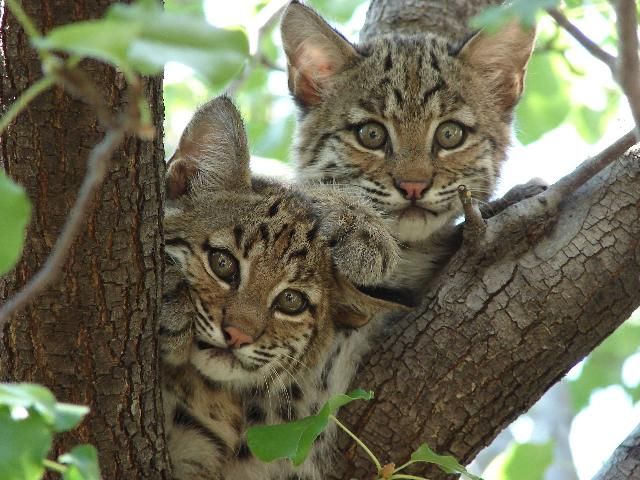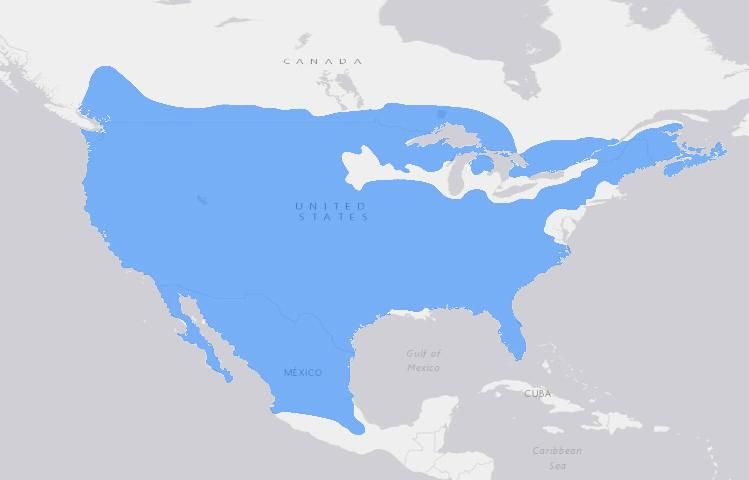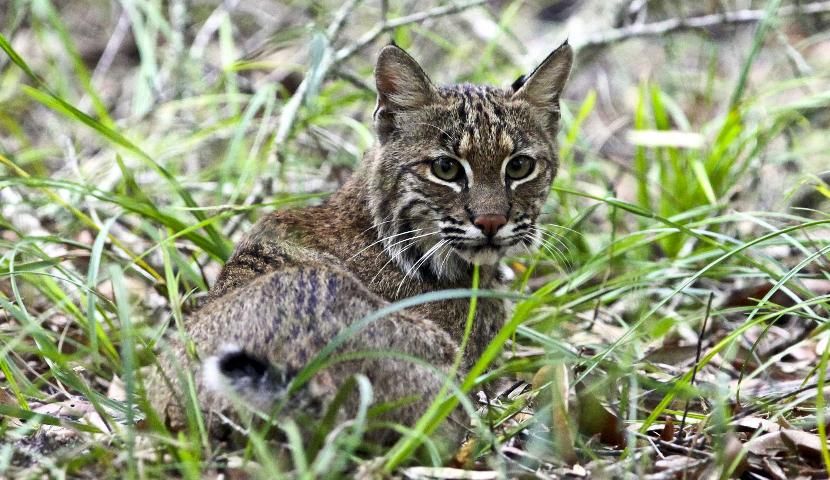The Flourishing Feline
-
Breeding = fall, winter, spring
-
Habitat = grassland, oak hammock, wetland, flatwood, scrub
-
Status= none

Credit: Reed Bowman
Scientific name: Lynx rufus floridanus
Common names: bobcat, wildcat, bay lynx, lynx cat, pallid lynx
Habitat: All habitats, including urban areas
Physical description: Twice as large as a domestic cat with brown/tan and white fur, small black spots and a short "bobbed" tail tipped with black. Back of ears black with white spot. Short snout. Often has a "ruff" around the neck. Body length between 2 to 4 ft.
Weight: 15–35 lbs, males typically larger than females
Reproductive rate: 50–60 day gestation, 1–4 kittens/litter
Lifespan: 3–4 years in the wild. The oldest reported bobcat in the wild was 16 years old, and the oldest in captivity was 32 years old.
Dispersal and home range: Kittens disperse at about 8 months of age. Range size in rural areas is 5–6 mi2, and in urban or suburban areas is 1–2 mi2. Male bobcats have larger home ranges than females.

Credit: Summer M. Tribble
Biology and behavior: Bobcats are members of the cat family (Felidae) and are habitat generalists, meaning they will use almost all habitats, including urban areas, beaches, and some agricultural areas. They prefer areas with thick cover for hunting. They will commonly climb trees or swim in search of food and are often found sunning and sheltering among branches. Bobcats are opportunistic carnivores and will eat whatever they can catch. Although they prefer rabbits and rodents, bobcats will also eat small reptiles, birds, feral cats, carrion, eggs, and occasionally deer and small livestock. Bobcats do most of their hunting at dawn, dusk, and through the night. Adult bobcats are solitary. Males and females are only found together during the breeding season (Aug–Mar). Female bobcats are sexually mature at about one year old, and males at about two years. Dens are usually in hollow logs, dense vegetation, or under rocks. Only female bobcats care for the young, and the kittens will stay with their mothers until the next breeding season.
History: Between 1.8 and 3.8 million years ago, the lynxes made an evolutionary split from the rest of the big cats. The Issoire lynx is believed to be the first ancestor of the bobcat that crossed from Eurasia to North America. The first North American evidence of this ancestral lynx species was found in Texas and dates back 2.4 to 2.5 million years. The Issoire lynx entered North America 5 to 2 million years ago and evolved into the bobcat we know today.
Distribution: Bobcats are present in most of North America and exhibit a gradient in size from the largest in Canada to the smallest in Mexico. Their range is expanding northward in Canada, following trends of increased forest clearing and warmer winters. Bobcats are present in all contiguous US states except Delaware, where they are believed to have been extirpated. In Florida, bobcats can be found in all 67 counties, although they have not been spotted on the islands of the Florida Keys in several decades. Florida scientists have reported a recent decrease in bobcat populations. Reasons for the decline are unknown, and state wildlife officials do not believe bobcat populations are currently at risk.

Credit: NatureServe and IUCN (International Union for Conservation of Nature). 2016. Lynx rufus. http://www.iucnredlist.org
How long can this felid flourish? In a time when wild cat populations around the world are declining, many might wonder why bobcats are thriving throughout most of their range. There is no single definitive answer because several factors contribute to the bobcat's resilience. Their generalist nature allows them to live in a variety of habitats and eat several types of food. These generalist traits also allow them to adapt quickly to changes such as human population growth, increased development, and landscape alterations, all trends that have had severe negative impacts on other cat species, such as the Florida panther (Puma concolor coryi). Bobcats are small, wild felids that require relatively small areas of habitat for their home range, allowing them to survive better in a fragmented landscape than a larger cat. However, this adaptability and resilience is limited, and a decline in bobcats has recently been observed in Florida. Rapid development in Florida may be reaching a threshold within which even bobcat cannot persist. Because predators are a critical component of a healthy ecosystem, it is important to monitor bobcat populations and implement conservation actions where needed. Bobcats are native to Florida and conserving and connecting tracts of suitable habitat for bobcats and their prey may help stabilize populations, and prevent bobcats from joining so many of their feline cousins on the list of threatened and endangered species.


Credit: Craig O'Neal
Did you know?
Bobcats will cover a large kill with dirt, grass, or leaves and return to it later, a practice called "caching."
Fast Facts
-
Bobcats usually only sleep for 2–3 hours at a time.
-
They have a keen sense of hearing and excellent vision. They can see in the dark to hunt at night.
-
Melanistic (all black) bobcats have been sighted about a dozen times in southern Florida.
How You Can Help
-
Support wildlife on your property by growing native plants and areas of thick cover.
-
Reduce urban conflicts by securing garbage cans, protecting livestock such as chickens, and keeping pet food indoors.
-
Avoid using poisons to kill rodents or other pests. These harmful toxins can be ingested by bobcats and other native wildlife.
More information and factsheets at https://edis.ifas.ufl.edu